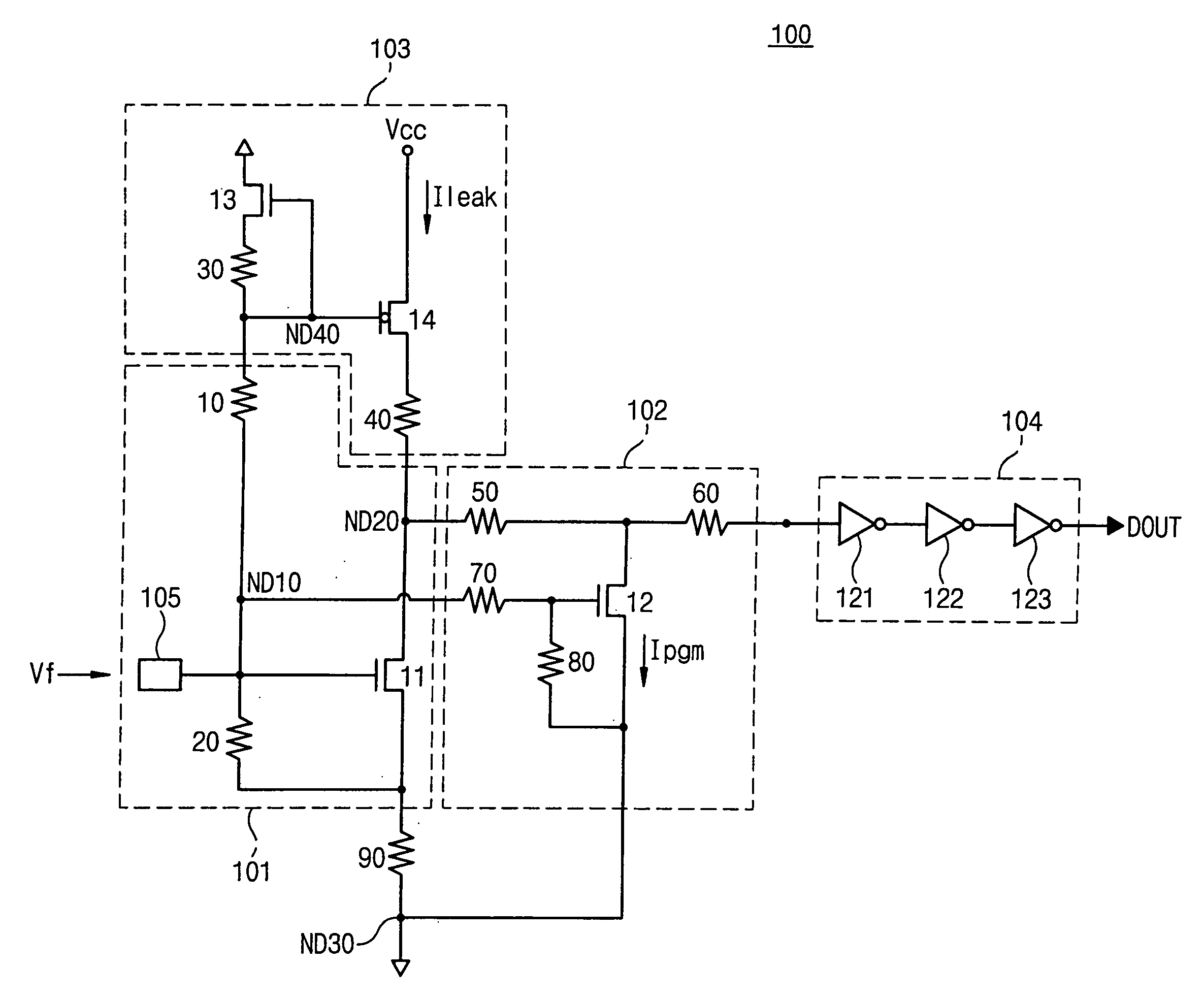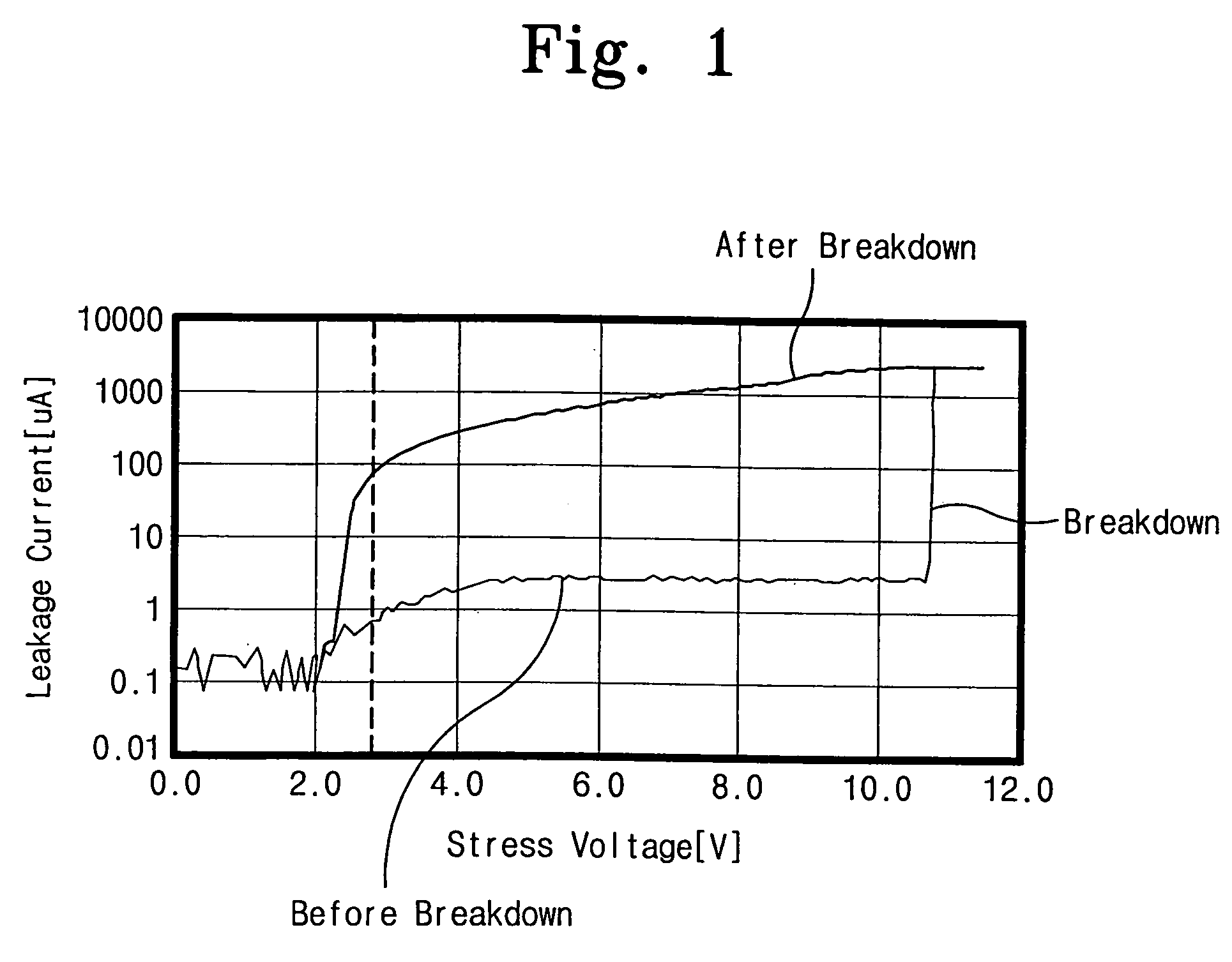E-fuse circuit using leakage current path of transistor
a leakage current path and transistor technology, applied in the field of fuse circuits, can solve the problems of not providing the ability to repair a memory device, adversely affecting the manufacturing yield of the memory device, and often considered inutility of the entire memory device, so as to improve the reproducibility and reliability of programming, improve the effect of immunity and high programming voltag
- Summary
- Abstract
- Description
- Claims
- Application Information
AI Technical Summary
Benefits of technology
Problems solved by technology
Method used
Image
Examples
Embodiment Construction
[0016] Reference will now be made to certain embodiments of the invention. However, it should be noted that the invention is not limited to only the illustrated embodiments. Rather, the embodiments are presented as teaching examples. The scope of the invention is defined by the claims that follow.
[0017]FIG. 1 is a graph showing dielectric breakdown strength characteristic of a generic semiconductor transistor. The horizontal axis of the graph denotes a stress voltage applied to the gate of the transistor. The vertical axis of graph denotes a corresponding leakage current flowing between the gate and drain or between the gate and source.
[0018] With reference to FIG. 1, a dielectric breakdown occurs in the generic transistor when a stress voltage of about 11V is applied. Prior to dielectric breakdown, the leakage current for the transistor flowing between the gate and drain, or between the gate and source is fairly steady at one to several micro-amperes. However, after dielectric br...
PUM
 Login to View More
Login to View More Abstract
Description
Claims
Application Information
 Login to View More
Login to View More - R&D
- Intellectual Property
- Life Sciences
- Materials
- Tech Scout
- Unparalleled Data Quality
- Higher Quality Content
- 60% Fewer Hallucinations
Browse by: Latest US Patents, China's latest patents, Technical Efficacy Thesaurus, Application Domain, Technology Topic, Popular Technical Reports.
© 2025 PatSnap. All rights reserved.Legal|Privacy policy|Modern Slavery Act Transparency Statement|Sitemap|About US| Contact US: help@patsnap.com



